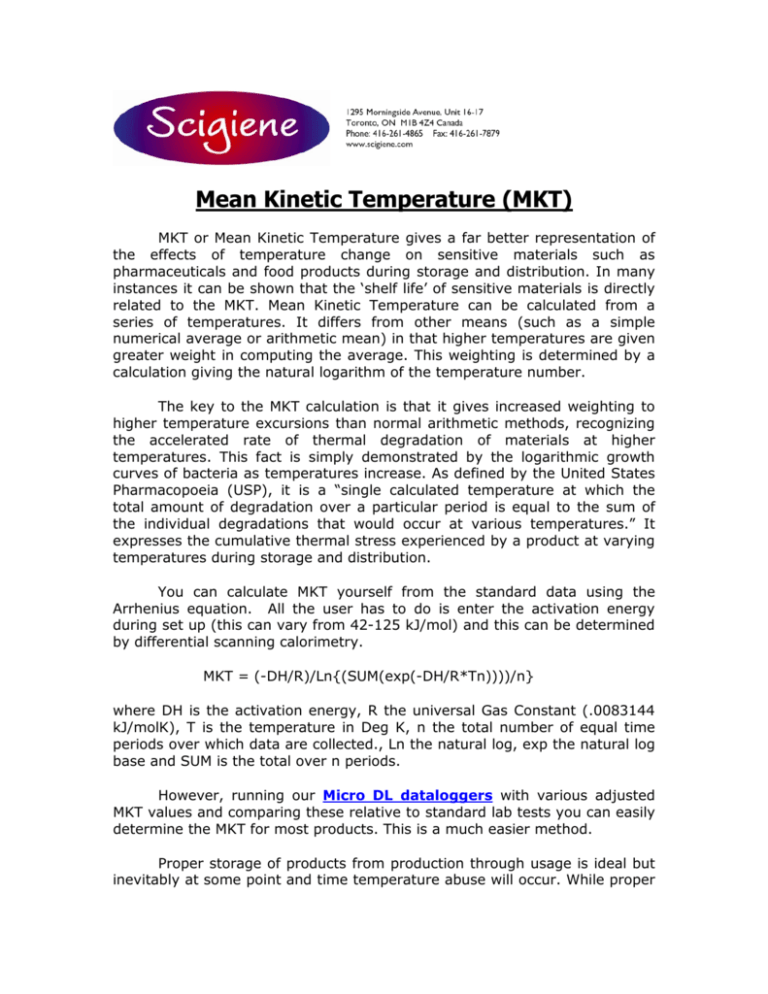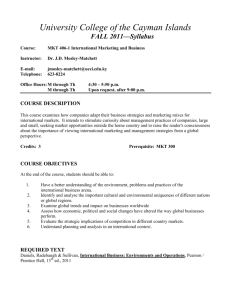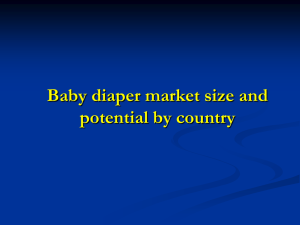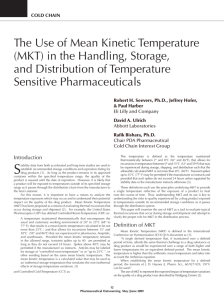Mean Kinetic Temperature (MKT)
advertisement

Mean Kinetic Temperature (MKT)
MKT or Mean Kinetic Temperature gives a far better representation of
the effects of temperature change on sensitive materials such as
pharmaceuticals and food products during storage and distribution. In many
instances it can be shown that the ‘shelf life’ of sensitive materials is directly
related to the MKT. Mean Kinetic Temperature can be calculated from a
series of temperatures. It differs from other means (such as a simple
numerical average or arithmetic mean) in that higher temperatures are given
greater weight in computing the average. This weighting is determined by a
calculation giving the natural logarithm of the temperature number.
The key to the MKT calculation is that it gives increased weighting to
higher temperature excursions than normal arithmetic methods, recognizing
the accelerated rate of thermal degradation of materials at higher
temperatures. This fact is simply demonstrated by the logarithmic growth
curves of bacteria as temperatures increase. As defined by the United States
Pharmacopoeia (USP), it is a “single calculated temperature at which the
total amount of degradation over a particular period is equal to the sum of
the individual degradations that would occur at various temperatures.” It
expresses the cumulative thermal stress experienced by a product at varying
temperatures during storage and distribution.
You can calculate MKT yourself from the standard data using the
Arrhenius equation. All the user has to do is enter the activation energy
during set up (this can vary from 42-125 kJ/mol) and this can be determined
by differential scanning calorimetry.
MKT = (-DH/R)/Ln{(SUM(exp(-DH/R*Tn))))/n}
where DH is the activation energy, R the universal Gas Constant (.0083144
kJ/molK), T is the temperature in Deg K, n the total number of equal time
periods over which data are collected., Ln the natural log, exp the natural log
base and SUM is the total over n periods.
However, running our Micro DL dataloggers with various adjusted
MKT values and comparing these relative to standard lab tests you can easily
determine the MKT for most products. This is a much easier method.
Proper storage of products from production through usage is ideal but
inevitably at some point and time temperature abuse will occur. While proper
cold storage, warehousing and distribution practices require that
temperatures are monitored and controlled, there are typically gaps in this
chain (loading/ unloading) and if 2 similar products are stored within the
same parameters but one is kept cooler than the other, common logic states
the product kept cooler has a longer shelf life. Depending on temperature
conditions the effect may be dramatic, as outlined already MKT weights the
higher temperatures in a series more than the lower temperatures. This is a
more appropriate way of calculating an overall thermal effect because of the
acceleration of thermally driven processes of degradation at higher
temperatures.
MKT simply provides a method of monitoring the true shelf life of your
product and with our new Micro DL dataloggers it is now possible to set
alarms based on the MKT of your product. Rather than just basing alarms on
the time above a specific temperature you can now better evaluate the shelf
life of your products from that point on. MKT becomes especially valuable
during transit where temperatures can vary significantly and traditional high
/low limits may not give a true indication of the products efficacy. Products
exposed to short periods above limits and yet stored at lower temperatures
will most likely still be okay, whereas products that have been in range for
the same time may be expired or much closer to expiry.






